In the foothills of majestic snow covered peaks of Sierra Nevada lies Spanish city of Granada. Once a capitol of vast and rich Moorish kingdom, today id draws tourists with its famous royal palace, the Alhambra, straight out of One Thousand and One Nights.
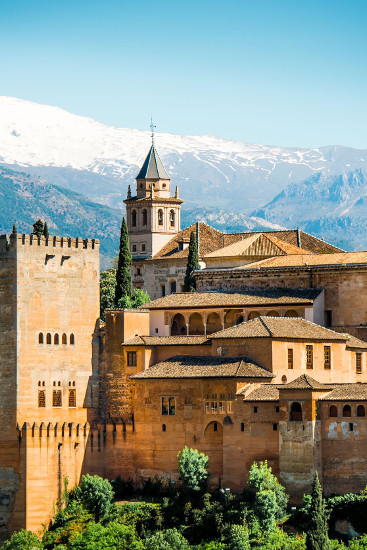
Sierra-Nevada-Granada
Granada was founded by the Moors in 711 AD and named Ilbira. For 250 years (since 1238) it was the capital of a Moorish kingdom whose borders enclosed both Almería and Málaga provinces. On a ridge overlooking the city rises the royal citadel of the Alhambra, a complex of spacious palaces, water gardens and royal retreat of Generalife. Yet Granada is so much more than its most visited attraction. There is an Arab quarter, Albaicin, its majestic cathedral with Royal Chapel housing remains of Catholic Monarchs, its famous University and most importantly amazing food, a mixture of Arabic and Iberia cuisine.
Getting there
Located in Southern Spain, about 150 km (95 miles) from Seville, Granada is easily accessible, by bus, car and train. We drove from Seville, where we spend 2 magical days and it took us less than 2 hours.
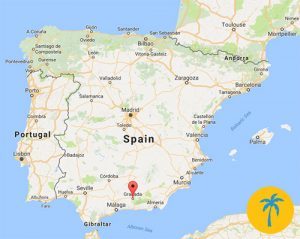
granada_spain_map
Best time to visit
Hands down Spring. Flowers are blooming throughout the city and especially in the Alhambra’s gardens. River, Rio Darrio, that flows around the walls of the fortress is fed by the melting snows of Sierra Nevada. And most importantly, you are avoiding scorching heat and crowds of the Summer months.
Accommodations
We decided to stay in the very center of the town, so we don’t have to drive or take any taxis. Our hotel, Hotel Palacio De Santa Paula, Autograph Collection was a charming converted monastery within walking distance to all attractions. You can book it directly or via Marriott.com website.
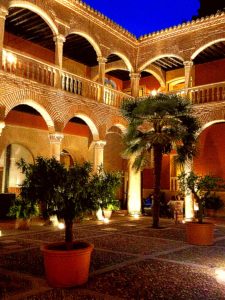
Hotel Palacio De Santa Paula

Hotel Palacio De Santa Paula
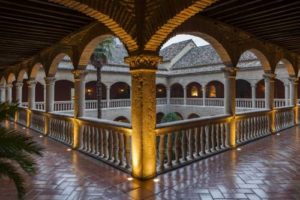
hotel-Granada
Brief History
Although there was a small settlement in the place of present day Granada since the Roman times, history of this city truly begins with Moors.
Moorish period
Tariq a Moorish Caliphate invaded Granada in 711 and the final Arab conquest of the town took place in 713. The Arabs named the town Ilbira and for the next 300 years the town was constantly expanded.
In 1010 internal conflicts between different clans of noble Arabs almost destroyed the whole town. 3 years later in 1013 the situation was solved and the dynasty of the Ziries took over the power. The Ziries declared independence of Morocco and formed its own kingdom in the town at the time called Granata. In the same time the Ziries decided to move the town from the Sierra Elvira hill to Albacin to better be able to protect the town from invasions. The Ziries stayed in power for 2 centuries and constantly expanded the town, which started to take the form it has today.

Granada, Spain
With the arrival of the Nazari dynasty in 1238 the Granada kingdom experienced its splendor including under its power the provinces of Granada, Malaga, and Almaria and parts of Cordoba, Sevilla, Cadiz and Jaen.
It was also under the Nazari dynasty the famous fortress and palace Alhambra and Generalife were build and great parts of the old town of Granada (the area known as Albacin) were also constructed in this period. The Nazari king Ibn al-Ahmar reached an agreement with the Spanish king Fernando III in the 13th century and was declared official vassal of the Spanish king. This declaration helped protecting the Naziris for many years from a fast Spanish invasion as the Spaniards was advancing all over the rest of Spain.
The Nazaris held Granada until the 2nd of January in 1492 when it was conquered by Ferdinand and Isabelle as the last Muslim kingdom in Spain.
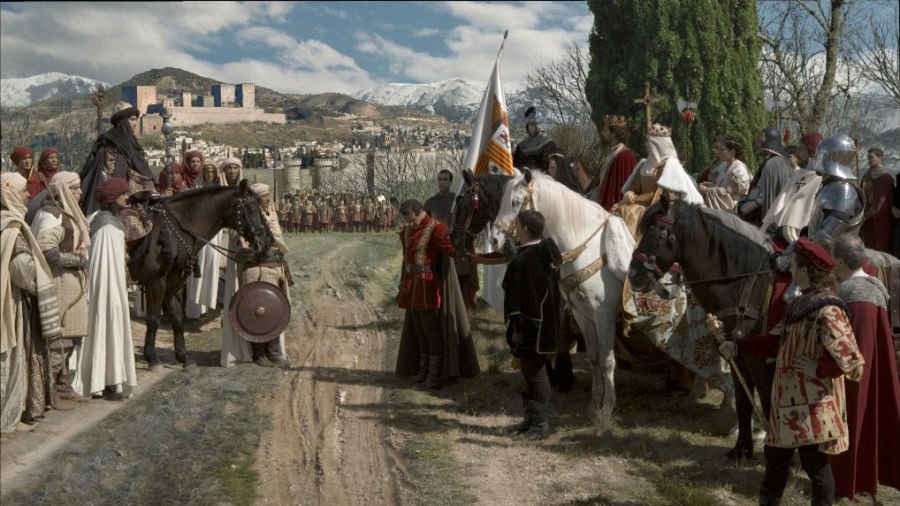
Surrender of Granada
The Christian Period
In the first years after the Christian conquest of Granada, Muslims living in the town and their customs were respected. This changed completely in 1499 when the bishop Cisneros demanded that all Muslims should be baptized. Later the Muslim population was indemnified with heavy taxes and it was prohibited to ware Arab clothes or speak other languages than Spanish. In 1568 due to the suppression, the Moors still living in the town rebelled against the Spaniards, but they were defeated and expelled from Granada.
The University of Granada, which is a very important part of the history of Granada was also founded in this period by Carlos V in 1531. Many laws governing Spain were written here. It remains an important center of higher learning in Spain today with many exchange programs hosting students from around the globe.

University of Granada
In the next 3 centuries Granada benefited from the gold coming in from the new continent and the town was expanded in a traditional Spanish way.
Granada didn’t start to change its appearance until late in the 18th century. In this period French and English design started to influence in the way the town was planned. This influence can be seen in the different open squares such as ‘El Saln’ or ‘La Bomba’ from that period.
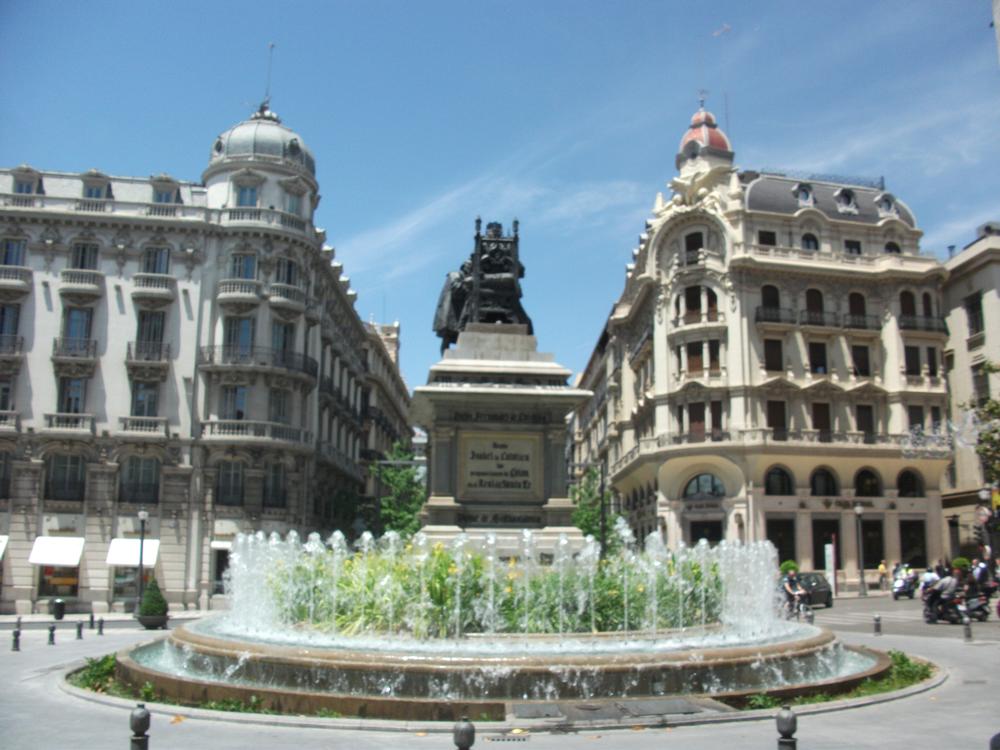
18th century Granada
Not until 1810, when Napoleon enters Spanish territory the history of Granada changed again. The French invasion only lasted 2 years, but after, a period of political instability grew in Granada. Granada became the center of the first revolutionary activity against the Spanish kingdom, which culminated with the execution of one of the revolutionary front figures Mariana Pineda.
Things to see and do in Granada, Spain
In this series about our trip through Iberian Peninsula, I tried to structure a perfect stay at each city, day by day. Granada is little different in that Alhambra and Generalife can absorb full day of your time, especially if, like we did, you decide to see it during a day and come back at night. So for the purpose of this post, let us assume that sights other than Alhambra will take one full day to enjoy, and rest can be spend any way you desire.
Cathedral
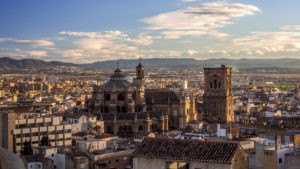
Granada-Cathedral
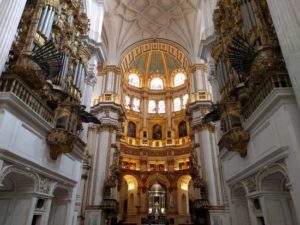
Cathedral-organ
On the orders of the Catholic Monarchs, work on the cathedral began in 1523 to Enrique de Egas’s Gothic-style plans. It continued under the Renaissance maestro Diego de Siloé, who also designed the façade. Corinthian pillars support his circular Capilla Mayor. Under its dome, windows of 16th century glass depict Juan del Campo’s The Passion. The west front was designed by local Baroque artist Alonso Cano. His grave and many of his works are housed in the cathedral. By the entrance arch are wooden statues of the Catholic Monarchs carved by Pedro de Mena in 1677. Granada’s cathedral is a beautiful example of Spanish Renaissance and during hot Summer months, great place to cool off. Make sure you see Royal Chapel, which has separate entrance and fees.
Capilla Real
The Royal Chapel was built for the Catholic Monarchs (Isabella I of Castile and Ferdinand II of Aragon) between 1505 and 1507 by Enrique de Egas. A magnificent reja (grille) by Maestro Bartolomé de Jaén encloses the mausoleums and high altar. The retablo by the sculptor Felipe de Vigarney has reliefs depicting the fall of Granada . Carrara marble figures of Fernando and Isabel repose next to those of their daughter Juana la Loca (the Mad) and her husband Felipe el Hermoso (the Handsome), both by the sculptor Bartolomé Ordóñez.
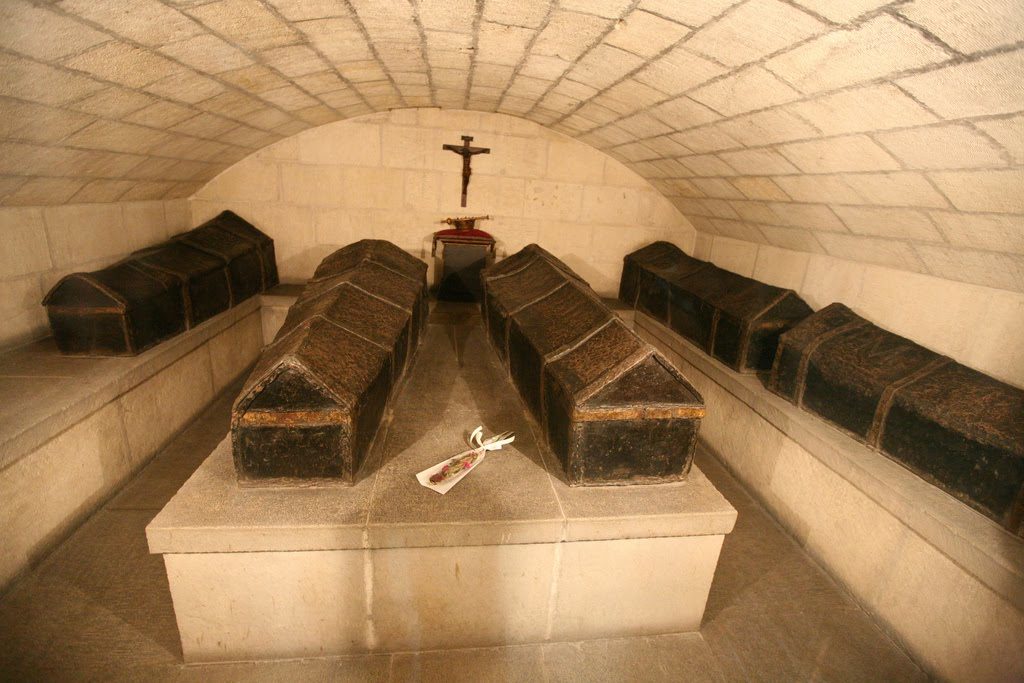
Granada-crypts-Catholic-Monarchs
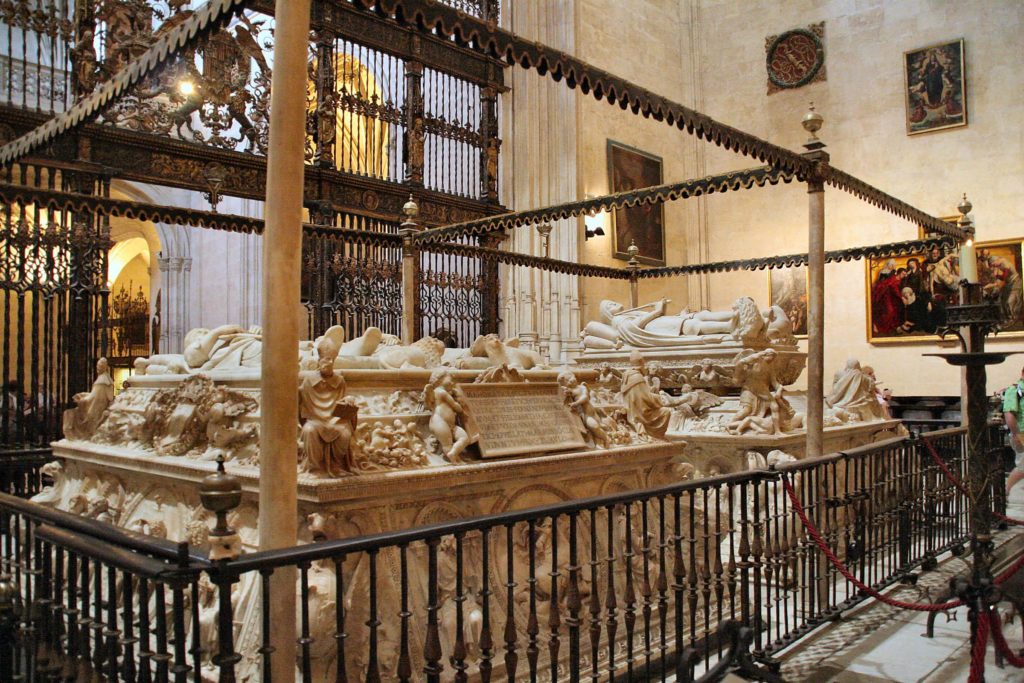
Granada-Capilla_Real
Steps lead down to the crypt where their corpses are stored in lead coffins. In the sacristy there are more statues of the two monarchs and many art treasures, including paintings by Van der Weyden and Botticelli. Glass cases house Isabel’s crown and Fernando’s sword.
Albaicín
This corner of Granada, clinging to the hillside opposite the Alhambra, is where one feels closest to the city’s Moorish ancestry. A fortress was first built here in the 13th century and there were once over 30 mosques, some of which can still be traced. In the evening, when the scent of jasmine lingers in the air, take a walk up to the Mirador de San Nicolás. From here the view over a maze of rooftops and the Alhambra glowing in the sunset is magical.
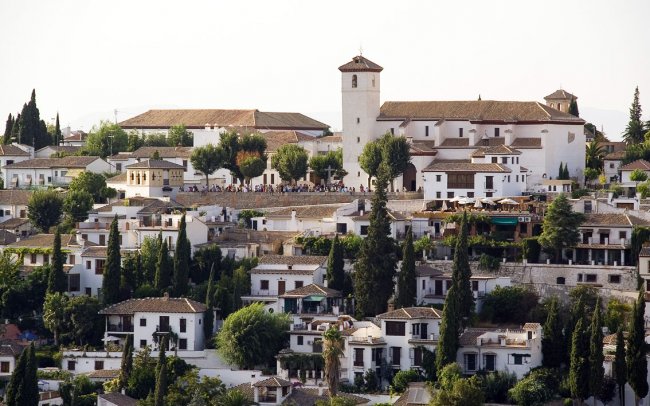
Albaicin-Granada
Along narrow, cobbled alleys stand cármenes, villas with Moorish decoration and gardens, secluded from the world by their high walls. This area is full of local shops selling arabic style goods. For few minutes you might feel like you are visiting Morocco.
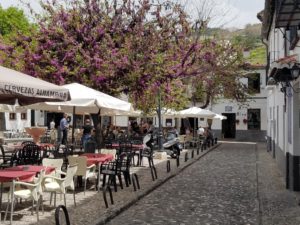
Albalicin-stores-and-food
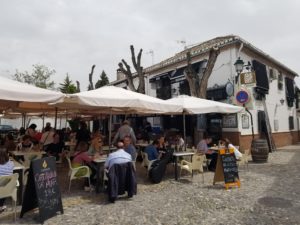
Albalicin-stores-and-food

Albalicin-stores-and-food
Don’t forget to stop by many local restaurants, serving delicious tapas and local food combining Arab and Iberian recipes.
Spices are abundant, a fact which is reflected in local cuisine as well as in many gift shops.
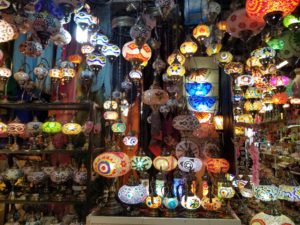
Albalicin-stores-and-food
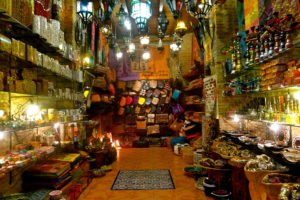
Albalicin-stores-and-food
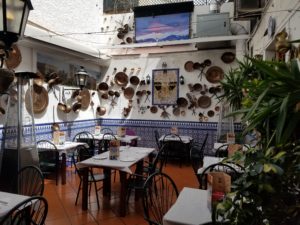
Albalicin-stores-and-food
Plaza Santa Ana and Carrera del Darro
In the valley, between Alhambra and Albaicin, lies Plaza Santa Ana and winding street of Carrera del Darro. Both are lined with local stores, and more importantly number of restaurants and cafes. Beside number of great choices of cuisine, they offer view to die for. From flowers lining a river banks and Rio Darrio running in the background to street musicians playing Spanish guitar, it is a great place to drink wine and take in local atmosphere while enjoying Alhambra on one side and Albaicin on another.
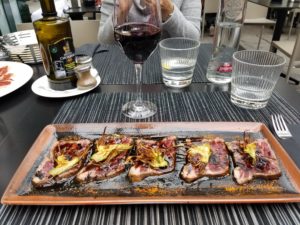
Granada-lunch

Granada-lunch

Granada-lunch
Alhambra and Generalife during day and at night
Buy tickets way in advance, don’t wait!!!

Alhambra
On this particular trip we did something different. I messed up, thinking that 3 weeks in advance, in April will be enough to get tickets to Alhambra. Needles to say I was proven wrong. Sold out. The only tickets available online were night visit to Generalife gardens. Obviously I bought them. In the last Hail Mary attempt, while staying at 5 star Hotel Alfonso XIII in Seville, I utilized local concierge. He worked his 5 star hotel magic, and we got sold out day visit tickets as well. Having both options to visit Alhambra during a day and night we decided to do both, and boy were we glad.
Alhambra is travel a photographer’s dream, and seeing it in both daylight and at night is worth every penny. I highly recommend you do that if time allows.
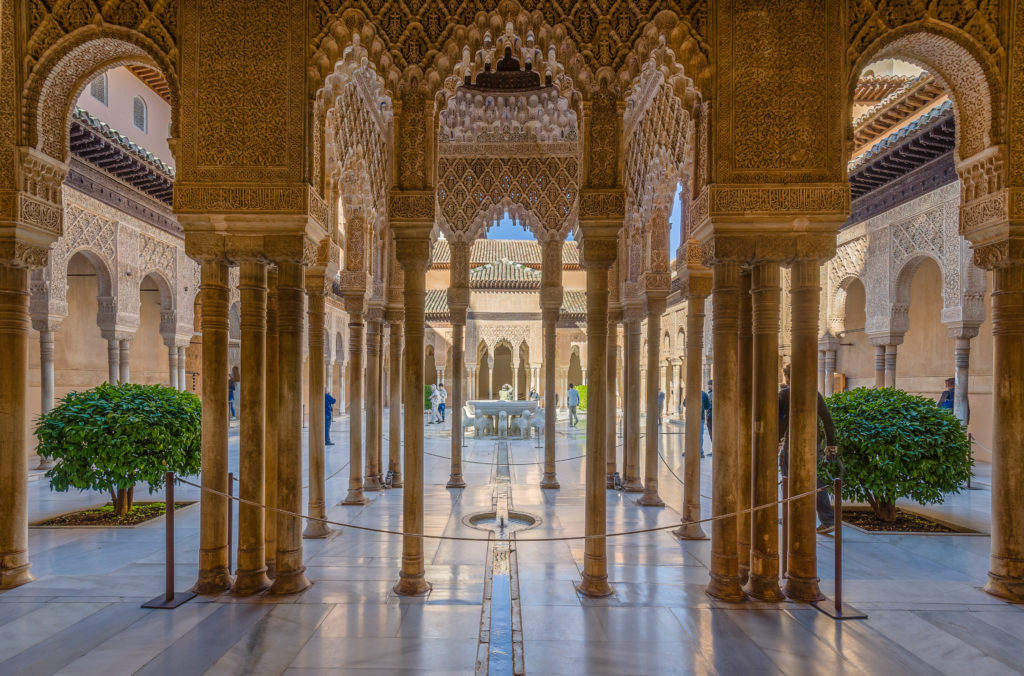
Alhambra-photographer’s-dream
Alhambra
A magical use of space, light, water and decoration characterizes this most sensual piece of architecture. It was built under Ismail I, Yusuf I and Muhammad V, caliphs when the Nasrid dynasty ruled Granada. Seeking to belie an image of waning power, they constructed their idea of paradise on Earth. Modest materials were used (tiles, plaster and timber), but they were superbly worked. Although the Alhambra suffered from decay and pillage, including an attempt by Napoleon’s troops to blow it up, it has undergone extensive restoration and its delicate craftsmanship still dazzles the eye. There are few parts to the fortress and garden complex.

Alhambra
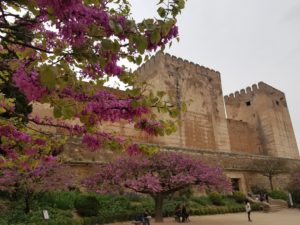
Alhambra
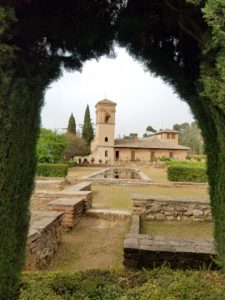
Alhambra
Part one: Nasrid Palaces
The exterior of the Alhambra may not be as recognizable as other wonders of the world, say, the Taj Mahal, but the real enchantment is found within the walls of the palaces. Archways, Arabic calligraphy, fountains, greenery, stained glass, marble floors, intricate tiling, and mythical statues together create the elegance and ambiance that is felt whilst walking through the ancient royal residence. This is where Alhambra’s architectural beauty and design comes trough. Delicate ornaments and Arabic calligraphy saying only one phrase “God is Great”. Fountains and water pools serve not only as decorations, but also as mirrors and listening devices, as light and sound bouncing of them allowed former rulers to spy on their quests and members of the court.
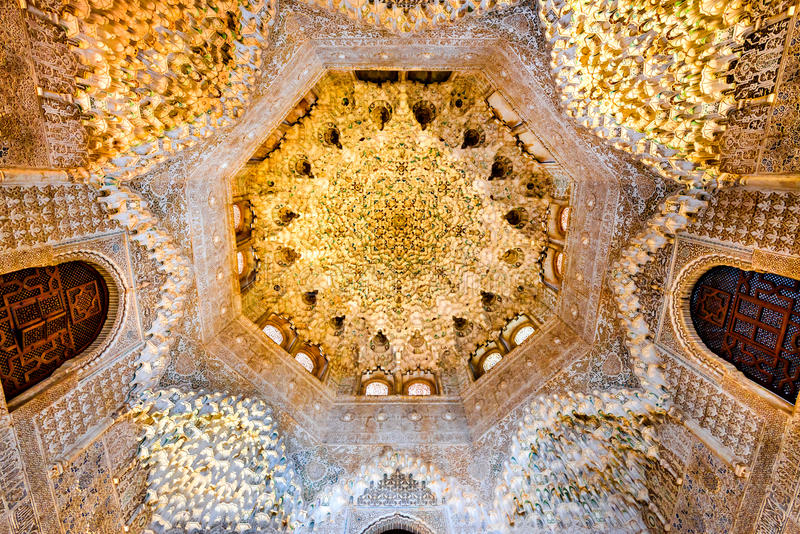
Alhambra-Palace
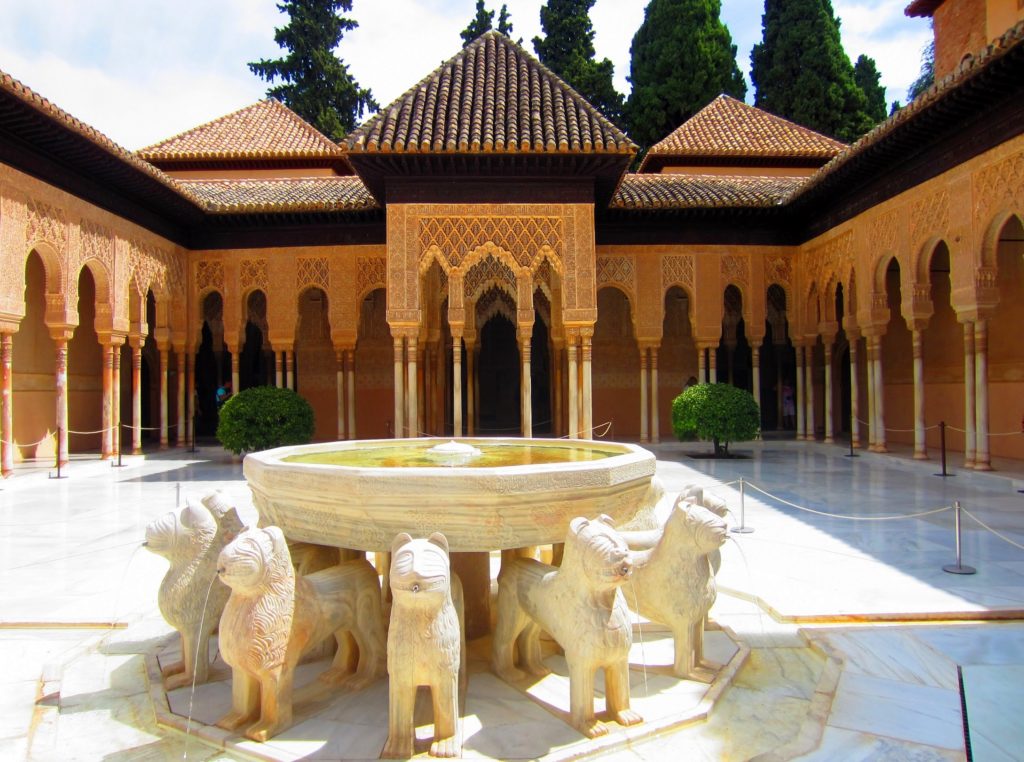
Alhambra-Palace
Part two: the Alcazaba
The mighty towers and thick walls that can be distinctly seen from the lower city center of Granada makeup what is referred to as the Alcazaba. Here, you can catch unbeatable panoramic views over the city and the Sierra Nevada mountains. It was designed as such, so the ancient Moors could easily keep a lookout for enemies and threats in the surrounding areas. It is believed to be the oldest part of the Alhambra, dating all the way back to the 9th century. Across the centuries, the fortress has been primarily used for military purposes but also as royal residencies, a prison, and more.
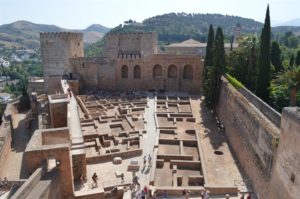
Alcazab
Part three: Charles V Palace
The Charles V Palace is located between the Alcazaba and the Nasrid Palaces, and was built in later years by the Catholics. One of the rooms has been converted to the Alhambra Museum, while another is now a viewing room displaying remarkable photography of the palaces and grounds. I recommend visiting this viewing room, located up the stairs of the impressive amphitheater. This much smaller palace doesn’t require a lot of time to visit. If you don’t have enough time, or are tired, it’s ok to skip Charles V Palace, as it is the least impressive interiors of the Alhambra complex
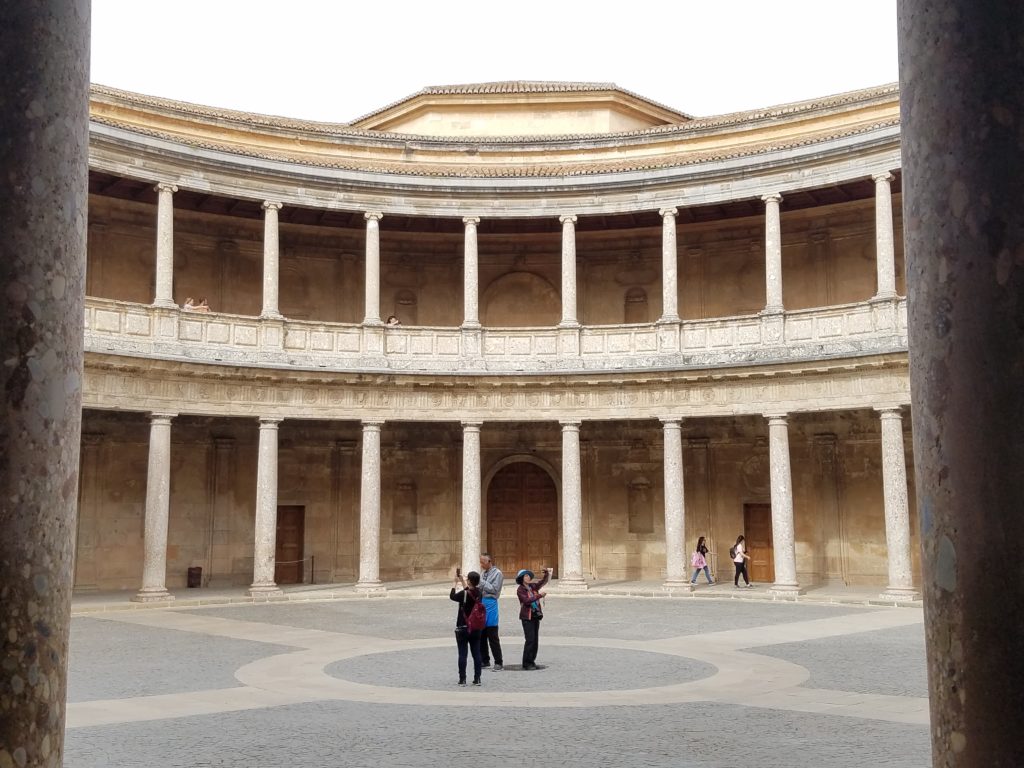
Charles V palace
Generalife
Located northeast of the Alhambra, the Generalife was the country estate of the Nasrid kings. Here, they could escape the intrigues of the palace and enjoy tranquility high above the city, a little closer to heaven. The name Generalife, or Yannat al Arif, has various interpretations, perhaps the most pleasing being “the garden of lofty paradise”. The gardens, begun in the 13th century, have been modified over the years. They originally contained orchards and pastures for animals. Later they provided a peaceful oasis of shady areas and flowerbeds for the Arab kings and their families to use as a place of leisure and retreat . Not to be confused as being the Alhambra’s gardens, Generalife actually has its own palace and residencies.
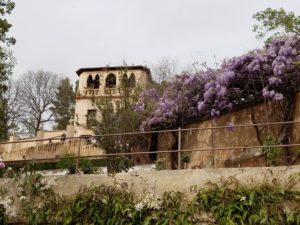
Generalife
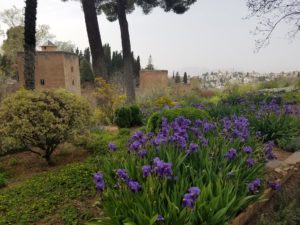
Generalife
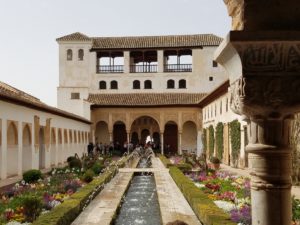
Generalife
Travel Tip
While in the palaces of Alhambra and Generalife, you have to move along at a pace dictated by crowds of tourists, but once outside take your time walking through the gardens. Notice different forms of natural irrigation and water reclaiming used for over 800 years. Take some pictures, no, take lots of pictures. When you come home you will be amazed how great they look!
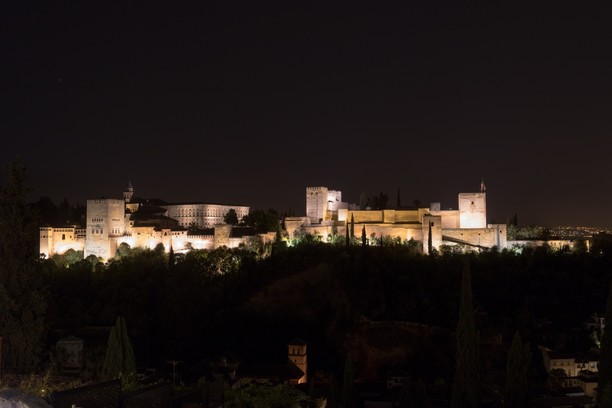
Alhambra And Generalife At Night, Granada Spain
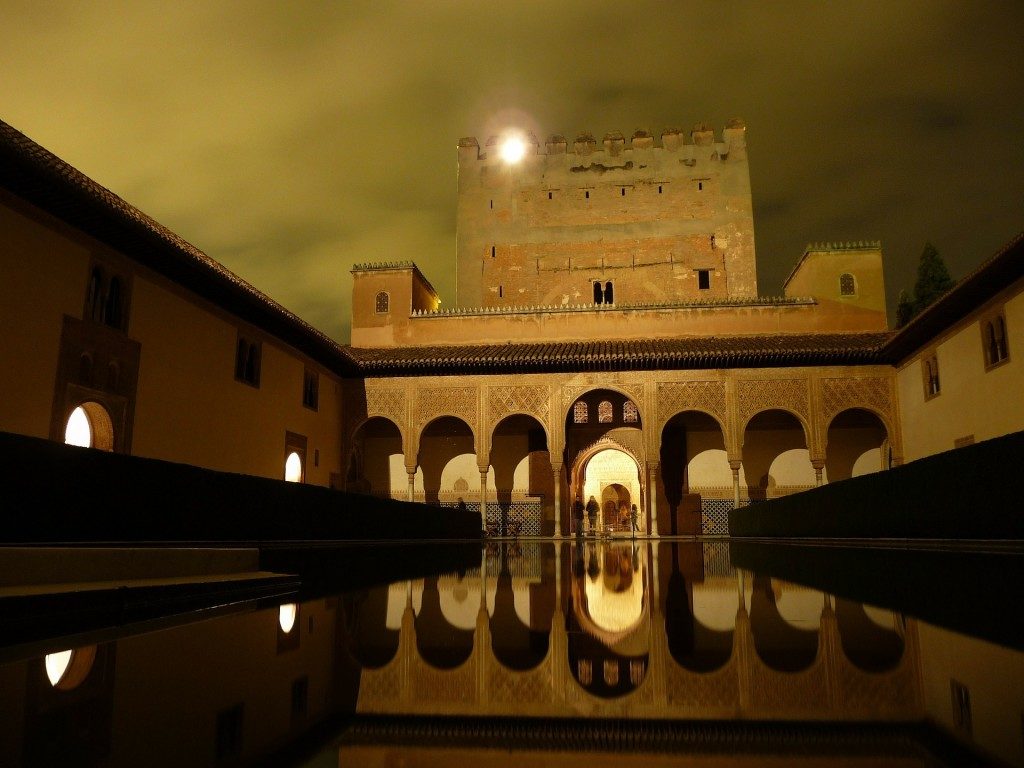
Alhambra And Generalife At Night, Granada Spain
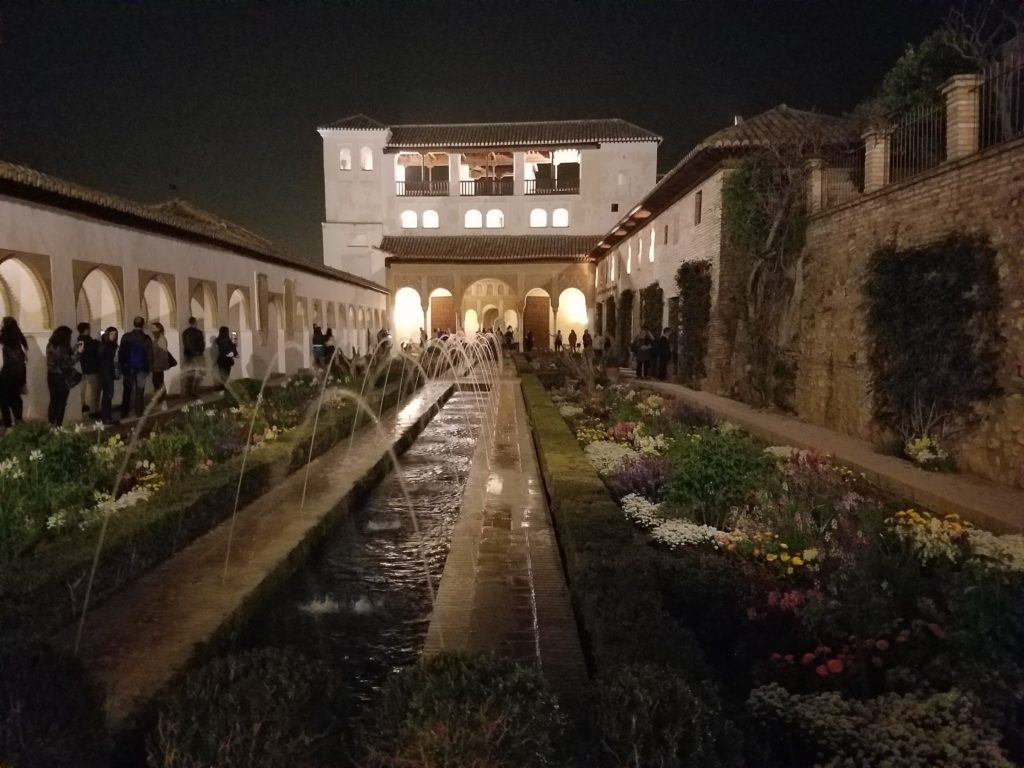
Alhambra And Generalife At Night, Granada Spain
When finished with visiting Alhambra, instead of taking a bus or a taxi to the center of Granada, consider asking one of the local guides for shortcut through the park. It is a 10 minutes walk in the shade of the trees down the hill, and it takes you directly to Plaza Santa Ana, a very center of Granada.
I hope you enjoyed Granada with us, if so, please spread the word about PointsTravels.com and follow us on Facebook and Instagram.

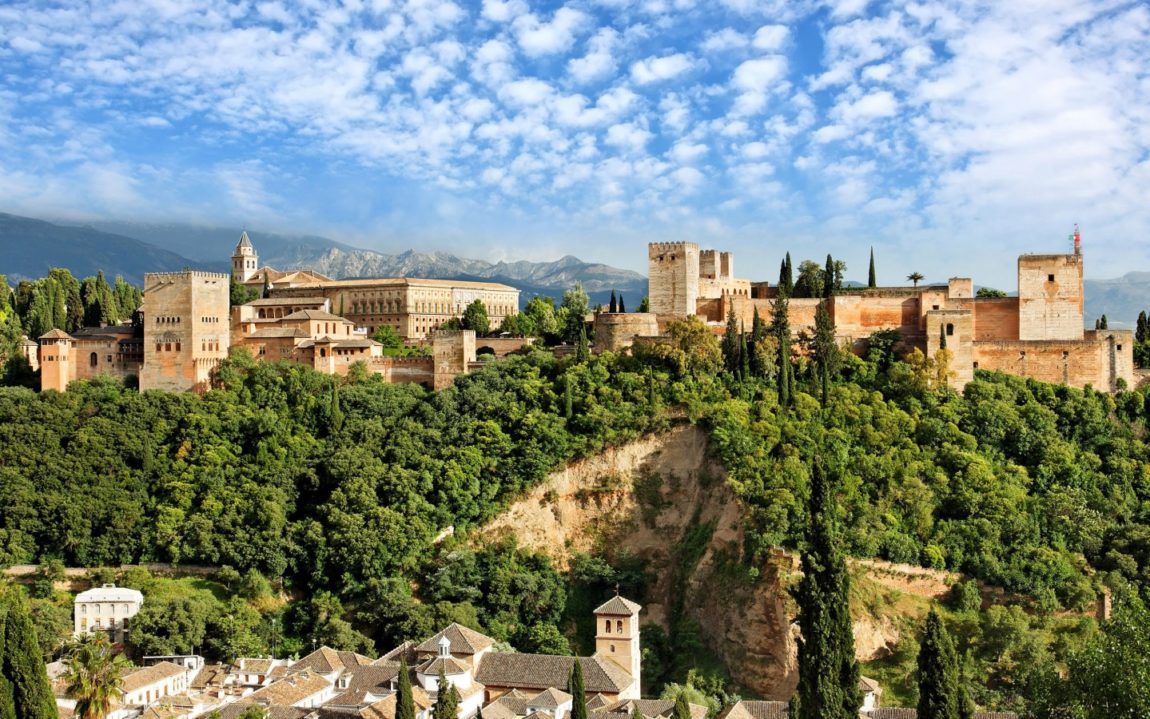
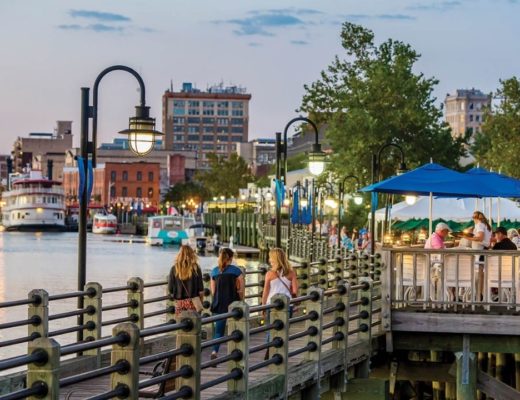

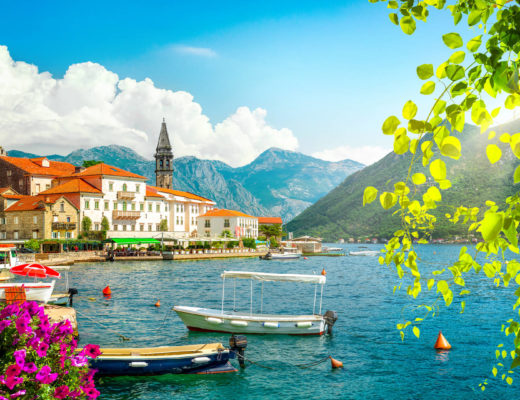
Review: W Hotel Barcelona, Spain - PointsTravels
August 8, 2018 at 10:18 am[…] arrived at W Hotel, Barcelona at 3 pm, so I was not worrying about room being ready after 8h drive from Granada, Spain. Well dressed handsome young men welcomed us at the entrance, handling our luggage and escorting us […]